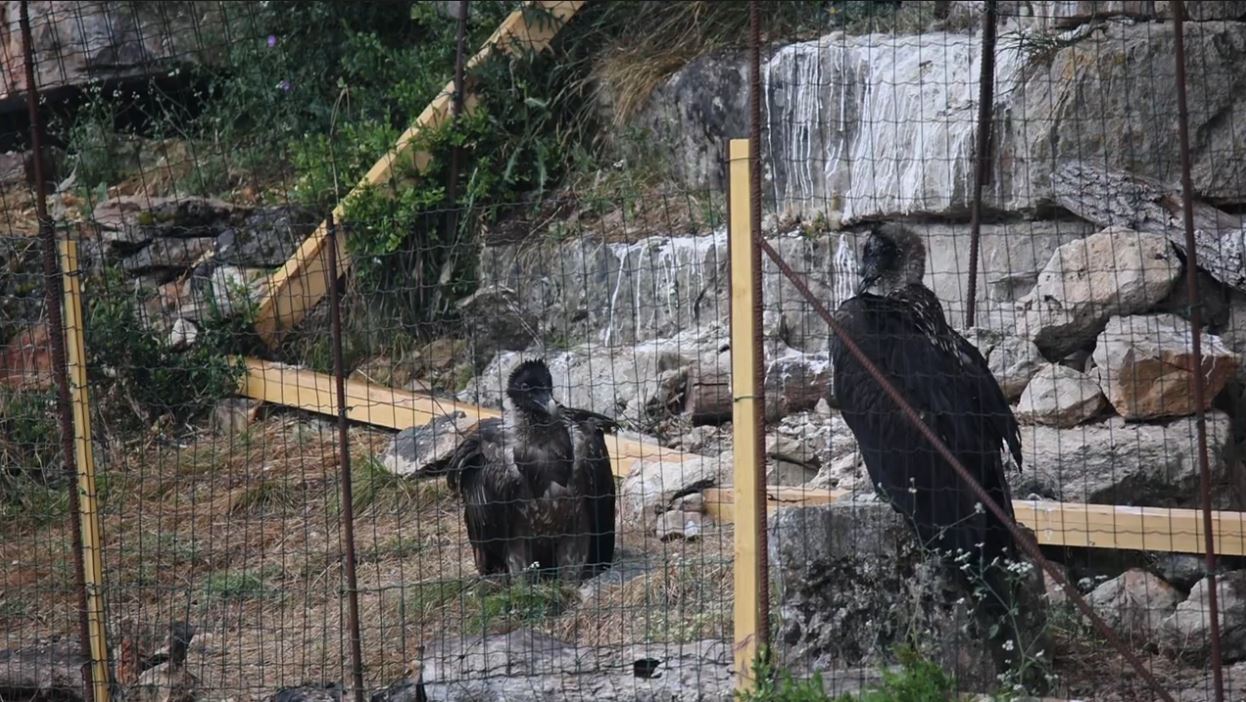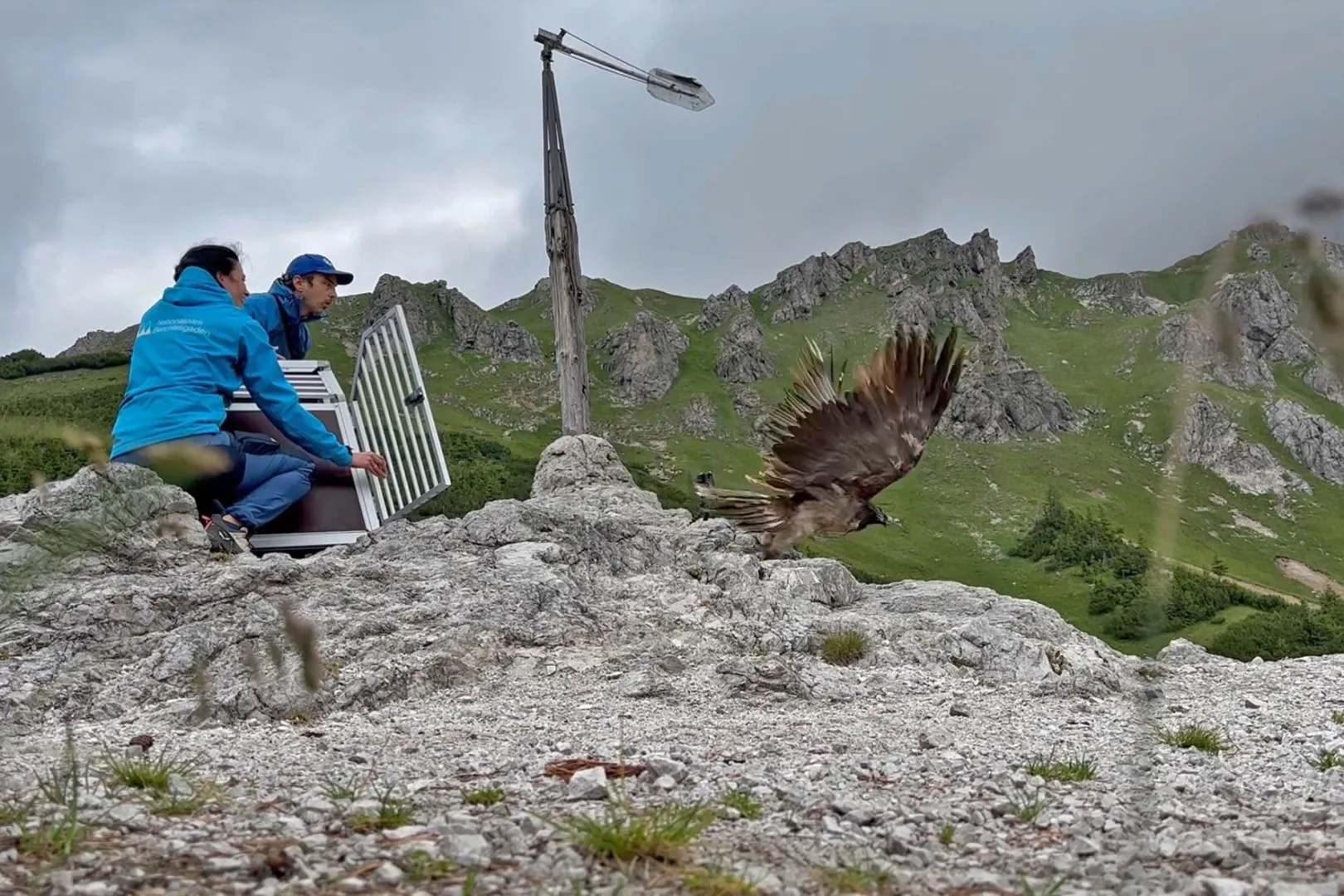Roc Genèse, the first wild bearded vulture nestling ever tagged in the French pre-Pyrenees, came back to its natal area after months of wandering across the Central Pyrenees.
Roc Genèse hatched last year from a very precocial egg (laid 30 November 2015) and flew off from its nest on the 20th May 2016, after having been tagged in its nest in the Aude, in the French eastern pre-Pyrenees, as part of the LIFE GYPCONNECT project. The nestling hatched in the easternmost known Pyrenean nest, therefore the closest to the Massif Central, where a reintroduction project is being implemented by the VCF, LPO and other partners.
Normally bearded vultures stay relatively close to the natal area on their first winter, and then disperse widely on their second winter, but Roc Genèse wandered widely already: he flew widely across the Pyrenees, spending some time in places like Vall d’Aran, Mont Valier, Parc National des Pyrénées, and Aragón and Catalonia in Spain. But on the 21st April, he came back to the Eastern Pre-Pyrenees, and has been flying around the Aude until now (see map).
The plan was to tag again the young from the same pair again this year, and thus a similar operation was mounted. The bird was even named by the children from the school at Bugarach / Rennes les Bains. However, when the researchers arrived at the nest they saw that Flamadel was still too young to be tagged or ringed or colour rings. It turned out that Flamadel was probably hatched from the second egg (and not from the first as estimated), and thus putting a GPS tag could put the bird at risk since it was still developing (see photo), so the researchers from LIFE GYPCONNECT decided to prioritize the safety of the bird over any data and left the bird alone – it is being fed by the parents, and we expect it to fledge soon.
Led by the League pour la Protection des Oiseaux (LPO), in partnership with the VCF, Vautours en Baronnies, Centre National d’ Informations Toxicologiques Vétérinaires, Electricité Réseau Distribution France, Parc National des Cévennes, Parc Naturel Régional du Vercors, LPO Aude, and the Université Pierre et Marie Curie – Paris 6, the LIFE GYPCONNECT project aims to establish a breeding population of bearded vultures in the Massif Central, as well as in the Pre-Alps, through reintroduction, and promoting dispersal movements between the Alps and the Pyrenean populations.
This year 8 young bearded vultures will be released in the project area, four in the Grands Causses, and two each in Baronnies and Vercors (westernmost Pre-Alps). The project also includes the establishment of supplementary feeding points to try to attract bearded vultures from the Pyrenees to cross the Aude valley.
The LIFE GYPCONNECT project is part of the VCF strategy to restore the species in western Europe, now that the Alpine population is firmly re-established – 46 pairs this year, and with two pairs breeding in the wild in Andalucía this year (following extinction there in the 80s, and the start of the reintroduction project 10 years ago), this project aims to promote movements of the species between Iberia and the Alps, thus promoting gene flow, which will also help increasing the genetic diversity of the alpine population, and thus accelerate the end of the reintroduction project there.
Photos LPO Aude



